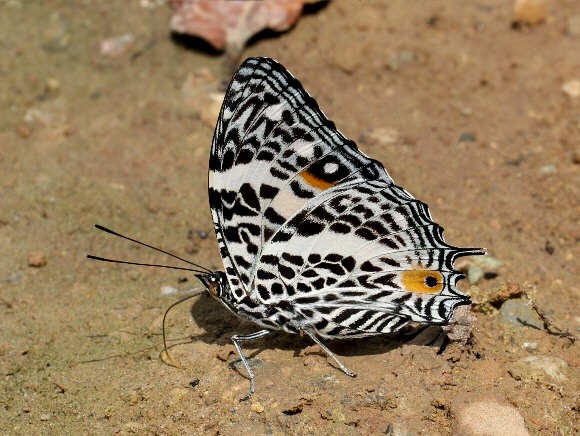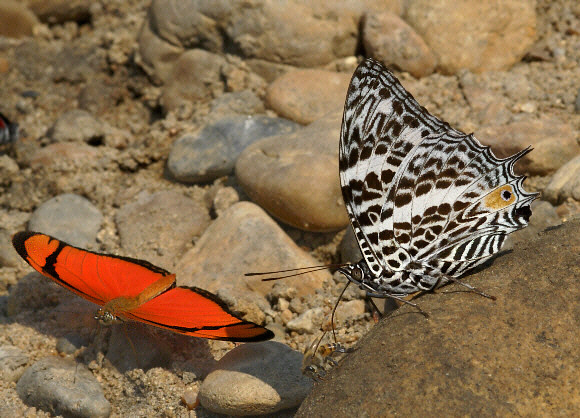
Introduction
This species is one of 4 members of the genus Baeotus, all of which are confined to the neotropics.
Unlike B. aeilus this species is not sexually dimorphic – in both sexes the upperside is dark brown with a broad pale orange median band.
Habitats
Baeotus deucalion breeds in lowland wet tropical forests at altitudes below about 800m, and like aeilus, it appears to be largely confined to the upper Amazon areas of Brazil, Ecuador and Peru.
Lifecycle
Unknown. The genus appears to be very closely related to Historis, which suggests that Moraceae and Urticaceae are probable foodplants.
Adult behaviour
Males are usually seen singly, often in the company of Baeotus aeilus or B. japetus, and are regular visitors to patches of mineral-rich damp sand along the shores of rivers in Amazonia. They have a rapid and powerful flight, and if disturbed, fly up and settle on nearby tree trunks or vegetation, but quickly return to their original feeding spot. I have not observed the female of this species.

